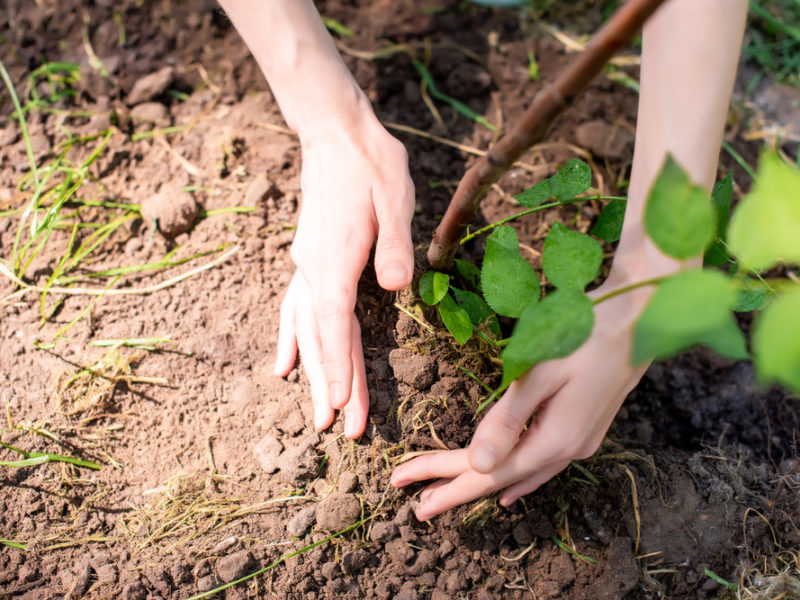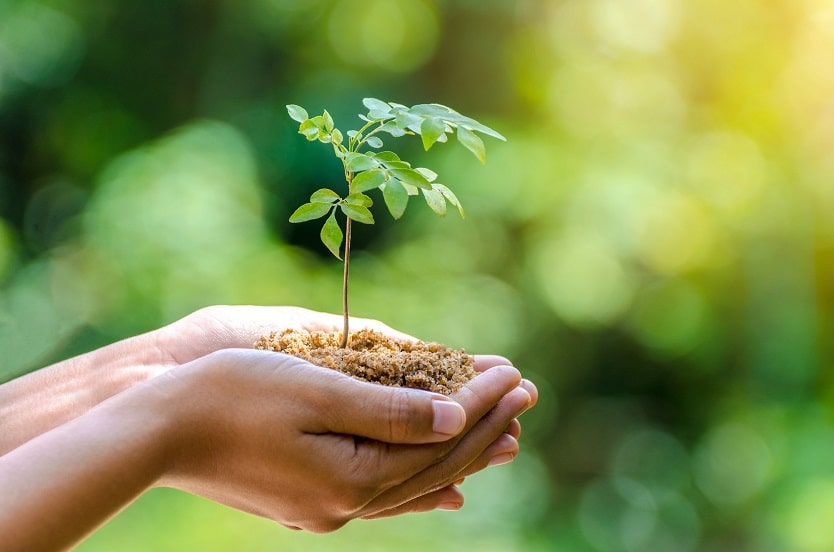Planting a tree is easier than you think. Here’s everything you need to know – just in time for National Tree Day.
It’s National Tree Day soon– a great opportunity to to do something positive for your local environment and community by getting your hands dirty and planting a tree or two.
If it sounds like too much hard work, it really isn’t. All it takes is these six simple steps:
1. Soak
Soak the tree while you work to ensure the root ball is soaked through, as a dry root ball could reject water from the surrounding soil. Consider adding a seaweed product to the water to help the tree avoid transplant shock and to improve root growth going forward.
2. Dig
It’s important to dig a hole that’s at least twice the size of the existing root ball of the tree. Depth is more important than width in most cases, so be sure to dig enough of a hole that the existing roots can be completely covered. A bigger, deeper hole is better, but you don’t have to go to any great lengths.
3. Improve

Improve your soil to help the plant survive in the long-term. In clay soils, add some gypsum to improve the soil structure and drainage, and well-rotted compost to provide organic matter and further structure. In sandy soils, compost is a must as it helps hold moisture around the roots. In all soils consider using a good fertilizer to help feed the plant, such as a slow-release fertilizer with microbial coating, or something as simple as blood and bone.
4. Decant
Take the plant out of its pot in a way that keeps the roots as intact as possible. Root disturbance in healthy stock will shock the plant. If the plant is pot bound, or the roots have poor structure, consider teasing out the very bottom.
5. Plant
Place the plant in the hole, and back-fill it with soil to cover the roots. Make sure the soil around the plant is firm, leaving a slight well at the top so that when it rains the water gets caught directly above the roots. This trick makes the most of any rain that comes, which is important in our climate.
6. Water
Water the plant in. This ensures that the soil settles around the plant, and the roots get good contact with the soil. It also provides an important first drink if the soil is otherwise dry, and provides deeper moisture even if it is already damp.
If you’re interested in protecting the planet, planting trees is an obvious choice. Here are a few reasons why trees are so cool:
They have a cool and calm effect

Trees literally ARE cool. Including more trees in urban planning creates cooler and more liveable environments. So Adelaide’s parklands don’t just look nice – they keep our city cooler. And we all know the benefits of connecting with nature in terms of health and wellbeing – helping us to keep calm and carry on.
They can help reduce your energy bill
Planting the right trees and shrubs around your house also helps to reduce energy. Planting the right trees or shrubs will help cool your building, which means using your air conditioner more efficiently and less energy use. Less energy use = lower energy bills. According to the United States Forest Service Centre for Urban Forest Research, just three trees, properly placed around a house, can save up to 30 per cent of energy use.
They help fight climate change
Trees are also very important in helping mitigate climate change. Through the natural process of photosynthesis, trees use energy from the sun to absorb carbon dioxide, storing it and emitting pure oxygen. A tree that lives for 40 years can offset 1 tonne of emissions. If you want to know how many trees you need to plant to offset your carbon footprint, try the Trees for Life carbon calculator.

